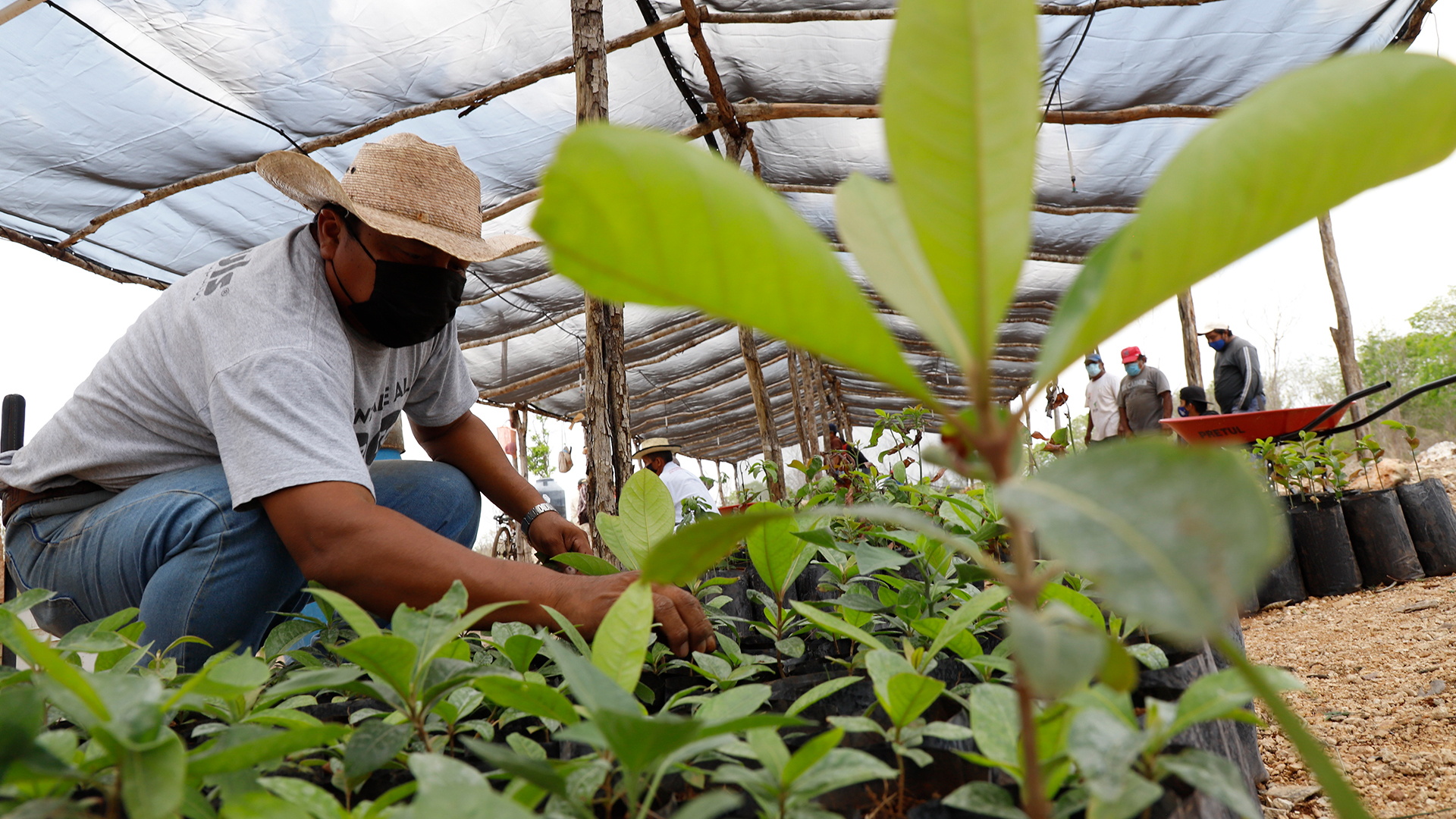
Setting net-zero emissions as a target for 2050 is so vague and ambiguous as to be almost meaningless. If an absolute reduction in emissions is not specified, it’s simply a concept masquerading as an objective. It’s more than a distraction; it’s a deception. The Canadian government should insist on absolute reductions – with no offsets.
In principle, a net-zero condition is achieved when the rate of greenhouse gas (GHG) emissions is matched by the rate at which an equivalent amount of carbon is removed. That’s done either by the natural sinks such as woodlands, wetlands and forests, or by engineering still under development such as direct air capture. The aim is that the emission of greenhouse gases should be balanced by the sinks — as Article 4 of the Paris Agreement explains. But where does this point of balance actually lie?
An industry may choose to reduce its emissions by a substantial amount, counting on the sinks (both natural and engineered) to compensate for the remaining emissions. But another industry, much less interested in actually reducing its emissions, may claim that nearly all of its emissions are being balanced by the carbon sinks.
It’s not a stretch of the imagination to believe that the oil and gas industry might prefer this option. It allows the industry to continue business as usual without reducing its emissions while claiming that the net effect on atmospheric carbon is zero because the sinks the industry is employing are so effective in absorbing carbon.
Most people are understandably cautious when purchasing something situated several thousand miles away that they’ve never seen up close. This doesn’t seem to be the case with some captains of industry who are seemingly all too ready to invest in projects in developing countries promising to protect huge swathes of forest and other “nature-based solutions” and to absorb carbon at a rate that meets the industry’s present level of emissions.
It’s an option for many industries because carbon offsets don’t require a reduction in emissions. They just have to be balanced by programs that claim to draw carbon out of the air. Not surprisingly, companies are said to be clamouring for offsets.
In the first quarter of 2021, the purchase of carbon offsets was more than 80 per cent higher than in the same period of the previous year. The current value of the global voluntary carbon markets is more than $2 billion. Offsets are an offer that industry can’t refuse. It’s been called a carbon con.
This is all good news for the oil and gas industry. For instance, in early May 2022, the U.S. gas company Cheniere Energy said it had sold a “carbon-neutral” shipment of liquefied natural gas to Shell. Carbon offsets purchased by Cheniere from Shell were used to balance out the global warming impact of burning the gas; it literally becomes a shell game. Now we see Cheniere’s emissions. Now we don’t.
Carbon offsets offer a slew of opportunities for gaming the system. There are several examples where the quantities of carbon absorbed from the atmosphere are almost negligible. Planting saplings or small shoots of mangroves have almost no immediate effect on atmospheric levels of carbon dioxide in the short- to medium-term. Yet, the industry that’s counting on the offsets continues to emit greenhouse gases unabated.
Greenwashing is rampant. For instance, Airports Council International, representing more than 500 European airports, has committed to achieving net-zero carbon emissions by 2050. But this well-publicized promise covers only buildings and operations on land, not emissions from aircraft. That means only two per cent of all aviation activities centred on these airports is addressed.
A recent report from the U.K.’s Climate Change Committee, which advises the government on these issues, doesn’t mince words: “The evidence reviewed for this report suggests VCMs [voluntary carbon markets] are not currently supporting Net Zero globally: low prices and inaccurate claims mean that credits may not be meaningfully reducing emissions, while their use may cause buyers to take less action on their own emission impact.”
The report adds that “the UK will only reach ‘Net Zero’ once almost all emissions have been directly reduced to zero, and the remaining small amount of emissions…are then neutralized by removals.”
The committee estimates that residual emissions are equivalent to about 15 per cent of 2019 levels. In other words, industries should directly reduce their emissions to at least 85 per cent of their baseline value before even thinking about purchasing offsets.
But there is another persuasive reason for directly reducing emissions. Industry emissions always include a mix of toxic pollutants, whereas offsets based on biomass sinks absorb only carbon dioxide. Even if the offsetting mechanism works perfectly, all the other compounds in industrial air pollution (including the often-carcinogenic volatile organic compounds) will continue to be emitted.
The Canadian government is pondering the issue.
In July 2022, Environment and Climate Change Canada (ECCC) released a discussion document inviting the public to provide input to the design and implementation of an approach to cap and cut emissions from the oil and gas sector.
The ECCC is keen on what it calls compliance flexibility choices. The department is seriously considering using carbon offsets as a way for the oil and gas sector to achieve its emission-reduction targets, asserting that “… offsets and ITMOs (internationally transferred mitigation outcomes, which are allowed under the Paris agreement) would result in the cap being achieved in part through emission reductions originating outside the sector or country.” However, as the review conducted by the U.K. committee clearly shows, this policy would be a serious mistake.
Despite this, the talk at 2022 United Nations Climate Change Conference or Conference of the Parties or COP27 was firmly in favour of carbon credits. The UN’s high-level expert group on the net-zero emission commitments of non-state entities, chaired by Catherine McKenna, Canada’s former minister of environment and climate change, argues that non-state actors “must prioritise urgent and deep reductions of emissions across their value chains.”
It then undermines this recommendation by stating that these entities are “strongly encouraged to balance out the rest of their annual unabated emissions by purchasing high-integrity carbon credits.” Unless emission-reduction targets are at least 85 per cent below a 2005 baseline, the annual unabated emissions could in principle be any value proposed by the industry — a significant loophole. The other obvious flaw is that it doesn’t define or ensure standards for both the integrity of the credits themselves and how non-state actors claim them.
John Kerry, U.S. special presidential envoy for climate, believes that only the private sector can solve the climate crisis. In an interview with the Wall Street Journal, Kerry said: “the entity that could help the most is the private sector with the right structure.” Unveiled at COP27, the proposed energy transition accelerator will “produce verified greenhouse gas emission reductions which participating jurisdictions will have the option of issuing as marketable carbon credits.” This is a billionaire-endorsed version of the carbon offset scam, this time sanctioned by the U.S. State Department.
The Canadian government should not participate in the energy transition accelerator initiative. All Canadian non-state actors should first be held to binding absolute emission reduction targets of 60 per cent by 2030, and 80 per cent by 2040. When we reach those milestones, we can talk about the deployment of carbon credits. Not before.










